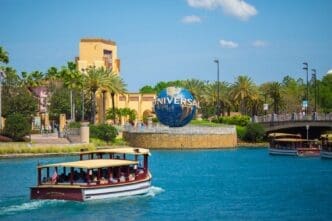For countless travelers, Spain is synonymous with the vibrant energy of Barcelona’s Gothic Quarter and the regal elegance of Madrid’s Prado Museum. While these global capitals are essential stops, they represent just the opening chapter of a much richer story. To truly understand Spain, one must venture beyond its two largest cities to discover a nation of fiercely independent regions, where ancient history, world-class cuisine, and breathtaking landscapes converge. From the sun-drenched Moorish palaces of Andalusia to the culinary paradise of the Basque Country and the pilgrim trails of Galicia, a deeper, more authentic Spanish experience awaits those willing to explore its diverse corners.
The Soul of Andalusia: Seville, Granada, and Córdoba
In Spain’s southernmost region, the legacy of nearly 800 years of Moorish rule has left an indelible mark on the culture, architecture, and spirit of the land. Andalusia is a place of passion and drama, where the scent of orange blossoms fills the air and the sound of flamenco guitar echoes through ancient streets. This is the Spain of postcards, brought to vivid life.
Seville: Flamenco and Grandeur
As the capital of Andalusia, Seville is a city that pulses with life. Its heart is the colossal Seville Cathedral, the largest Gothic cathedral in the world and the final resting place of Christopher Columbus. Adjacent to it lies the Royal Alcázar, a breathtaking palace complex of tiled courtyards and intricate plasterwork that still serves as a royal residence.

But to find Seville’s soul, cross the river to the Triana neighborhood, historically the home of sailors, bullfighters, and flamenco artists. Here, intimate, family-run tablaos offer authentic, heart-wrenching flamenco performances that are a world away from tourist shows. The city’s spirit is perhaps best captured in the sprawling, magnificent Plaza de España, a testament to Spanish pride and craftsmanship.
Granada: The Alhambra’s Majesty
Nestled at the foot of the Sierra Nevada mountains, Granada is home to Spain’s single most remarkable sight: the Alhambra. This sprawling palace and fortress complex was the last bastion of the Nasrid dynasty, and its beauty is the stuff of legend. Visitors wander through the serene Generalife gardens, marvel at the impossibly detailed stucco of the Nasrid Palaces, and gaze out from the Alcazaba fortress over the city below.

A word of advice: tickets for the Alhambra, particularly for the coveted Nasrid Palaces, sell out months in advance and are essential to book online. Beyond the palace walls, lose yourself in the winding, whitewashed lanes of the Albaicín, the old Arab quarter. Granada is also famous for its tapas culture, where a free, and often substantial, plate of food is served with every drink ordered.
Córdoba: A Journey Through Time
Once the most populous city in the world and the capital of the Islamic Caliphate, Córdoba is a place of profound historical weight. Its centerpiece is the Mezquita-Catedral, a unique and awe-inspiring structure that began as a Visigothic church before being converted into a grand mosque. Walking through its forest of over 850 red-and-white striped arches is a dizzying, unforgettable experience, made all the more surreal by the soaring Renaissance cathedral nave built directly in its center.

Surrounding the Mezquita is the Judería, the old Jewish Quarter, a labyrinth of narrow streets, artisan shops, and hidden courtyards. In May, the city hosts the Fiesta de los Patios, where private residents open their stunning, flower-filled patios to the public in a vibrant competition.
Northern Wonders: The Basque Country and Galicia
Trading sun-baked plains for lush green hills and a rugged coastline, Northern Spain feels like another country entirely. Here, distinct languages, ancient traditions, and a world-renowned culinary scene define the experience. This is Green Spain, a dramatic and delicious contrast to the south.
San Sebastián: A Gastronomic Paradise
San Sebastián, or Donostia in the Basque language, is arguably the world’s greatest food city. Its claim to fame is pintxos, the Basque version of tapas, which are intricate, artful bites displayed on countertops in bars throughout the Old Town. The tradition is to go from bar to bar, sampling one or two specialties at each stop with a small glass of local cider or txakoli wine.

Beyond its unparalleled cuisine—the city also boasts one of the highest concentrations of Michelin-starred restaurants per capita—San Sebastián is stunningly beautiful. It curves around the shell-shaped La Concha bay, widely regarded as one of Europe’s most beautiful urban beaches, perfect for a stroll along its elegant promenade.
Bilbao: From Industry to Art
Once a gritty industrial port, Bilbao has undergone one of the most remarkable transformations in modern urban history. The catalyst was the 1997 opening of the Guggenheim Museum Bilbao, a shimmering masterpiece of titanium and glass designed by Frank Gehry. The museum didn’t just put Bilbao on the map; it revitalized the entire city, sparking a cultural and architectural renaissance.

While the Guggenheim is the main draw, the city’s Casco Viejo (Old Town) offers a delightful contrast with its seven original streets, bustling pintxos bars, and the lively Mercado de la Ribera. The city is a powerful example of how art and forward-thinking vision can redefine a destination.
Santiago de Compostela: A Pilgrim’s Reward
For over a millennium, Santiago de Compostela has been the final destination for pilgrims walking the Camino de Santiago, or the Way of St. James. The energy in this Galician city is palpable, as weary but triumphant walkers from around the world converge on the Praza do Obradoiro. Here, they gaze up in awe at the magnificent façade of the Santiago de Compostela Cathedral, the reputed burial place of the apostle St. James.

Whether you’ve walked for a month or arrived by train, the city’s spiritual and historical significance is moving. Beyond the pilgrimage, Galicia is famous for its Celtic roots, bagpipe music, and some of the best seafood in Europe. Be sure to sample pulpo a la gallega (Galician-style octopus) in a traditional tavern.
Mediterranean Bliss and Historic Heartland
From island paradises to ancient university towns, Spain’s diversity continues to unfold. These destinations offer yet another perspective on the country’s rich cultural tapestry.
Mallorca: Mountains and Coves
The largest of the Balearic Islands, Mallorca is too often reduced to its reputation for package resorts. The reality is an island of stunning contrasts, from the dramatic, UNESCO-listed Serra de Tramuntana mountain range to hundreds of pristine coves, or calas, with turquoise water. Rent a car and explore the island’s interior and rugged west coast.

Discover charming stone villages like Valldemossa and Deià, which have attracted artists and writers for decades. Drive the winding road to Sa Calobra for breathtaking views, or find a secluded beach to enjoy the Mediterranean sun far from the crowds. The capital, Palma, also boasts a magnificent Gothic cathedral and a vibrant old town worthy of exploration.
Valencia: City of Arts, Sciences, and Paella
As Spain’s third-largest city, Valencia offers a compelling mix of the ancient and the avant-garde. Its most famous landmark is the City of Arts and Sciences, a futuristic architectural complex designed by Santiago Calatrava and Félix Candela. This sprawling site includes an opera house, science museum, and aquarium, all set within a dried-up riverbed that has been converted into a beautiful park.

But Valencia also has a charming old town with a bustling Central Market and the Silk Exchange, a UNESCO World Heritage site. Most importantly, Valencia is the undisputed birthplace of paella. For an authentic taste, head to a restaurant near Albufera Lake, just south of the city, where the rice is grown.
Salamanca: The Golden City
Located in the heart of Castile and León, Salamanca is home to Spain’s oldest university and an atmosphere of scholarly prestige. The city is known as La Dorada, or “The Golden City,” for its ornate sandstone architecture that glows warmly in the sunlight. The Plaza Mayor is often called the most beautiful public square in Spain, an enclosed and perfectly proportioned space that serves as the city’s living room.

Wandering through Salamanca is like stepping back in time. Visitors can explore the historic university buildings, climb the towers of the dual Old and New Cathedrals for panoramic views, and hunt for the famous carved frog on the university’s façade, said to bring good luck to students who find it.
While the allure of Madrid and Barcelona is undeniable, they are but two facets of a complex and captivating country. To truly appreciate Spain is to savor fresh seafood in a Galician port, to witness the passion of a Sevillano flamenco dancer, to get lost in the medieval streets of Córdoba, and to indulge in the culinary artistry of San Sebastián. By venturing beyond the capitals, you don’t just see more of Spain—you experience its soul.








